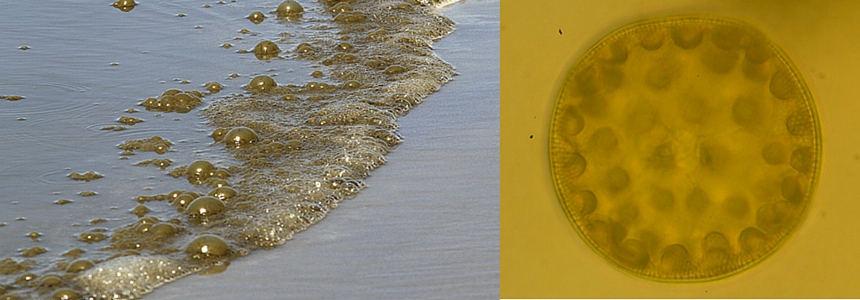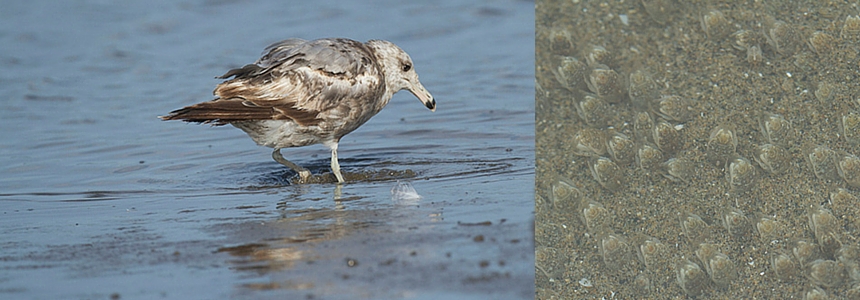We walk on it. We drive on it. We dig clams on it. It looks like a desert, devoid of life. But like the desert, the beach is actually teeming with wild life—plants and animals, many of them microscopic. “This very narrow interface between the ocean and the land catches the events and the products from the ocean and the land—some good, some bad,” says Gearhart naturalist and photographer Neal Maine, who is seeking to raise awareness of the beach as not merely a highway but a vibrant ecosystem. “It just follows the physical laws of water and land.”
Call it a continuation of Neal’s Wild Edge musings, although Neal has been focused on this topic since long before that book—a photographic exploration of the interconnectivity of ocean-shoreline ecosystems from the Arctic to Baja—was published last fall.
“It’s sand, but it’s also habitat,” Neal says. “Each sand grain has its own colony of microorganisms.”
What looks to the uninformed like an oil slick on the beach IS oil–a natural product of microscopic surf diatoms. The oil and broken-up diatoms nourish razor clams and other creatures living in the sand.
Over the past century, drift logs on the beach have become scarce, and that’s unfortunate, Neal points out. They bring a host of resources to the ocean beach—including the pelagic gooseneck barnacles clinging to this log, providing a feast for these gulls.
 Within the holdfast of every strand of bull kelp that washes onto the beach dwell dozens of tiny crabs and other critters, many of them too small to see with the naked eye (as Neal has observed by immersing a holdfast in a tank of seawater and watching what crawls out).
Within the holdfast of every strand of bull kelp that washes onto the beach dwell dozens of tiny crabs and other critters, many of them too small to see with the naked eye (as Neal has observed by immersing a holdfast in a tank of seawater and watching what crawls out).
“The source of all that material comes from the organics that wash onto the beach at the edge of the sea. You have all these creatures that depend on nutrients washing in on the shore.”
Life on the beach, he points out, “depends on what is washing down from the shore and what washes in from the ocean. It is an ecosystem that depends on organic debris originally put together from sunlight.”
Watch the shorebirds foraging at the edge of the waves, Neal says. “What are they eating? Creatures that are living in the sand. Twenty-four-seven, 365 days a year, regardless of the weather, they have to do this, night and day, to survive.”
Watch the gulls stomping on the beach. What are they doing? “They’re fishing,” Neal explains—kicking up mole crabs. “The gulls get in the pools and they rock their feet up and down, and that releases mole crabs. They know when to do this mole crab dance; the adults teach young gulls how to do it.”
Mole crabs feed on plankton they glean from the waves that wash onto the beach. They don’t reproduce on Oregon beaches; they arrive as larvae drifting north from California when ocean conditions are right.
“The ocean water off our shore is not ‘our’ water; it was Nehalem Bay’s or Ilwaco’s water yesterday,” Neal observes. “The system is both horizontal and vertical. Everything is on the move.”
Neal’s plea: “Think below the sand.”
Neal will be speaking on this topic in a presentation titled “It’s Not Just the Beach: Rethinking the Beaches” sponsored by Haystack Awareness Project at the Cannon Beach Library at 7 p.m. on April 14.





Comments